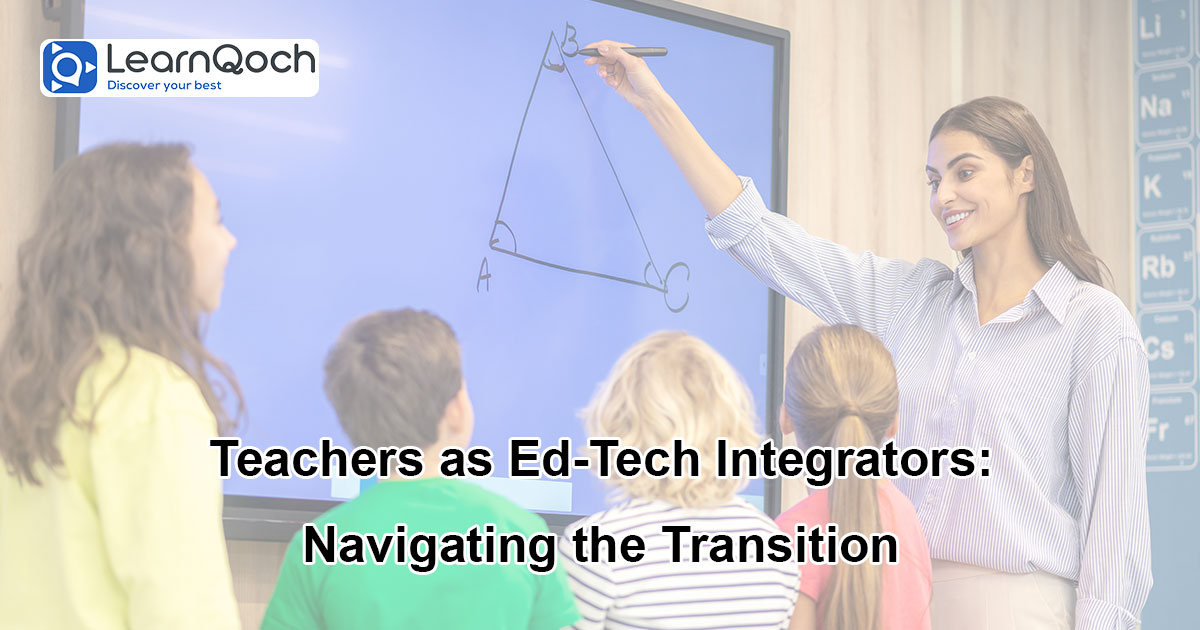Teachers as Ed-Tech Integrators: Navigating the Transition
In today’s rapidly evolving educational landscape, technology has become an integral part of the teaching and learning process. As educators, it’s crucial to embrace this shift and become proficient in incorporating technology effectively into our teaching methodologies. This transition into the realm of Ed-Tech integration can be both exciting and challenging, but with the right tips and strategies, educators can thrive in this digital age.
1. Start with a Growth Mindset:
Embracing technology in education begins with a growth mindset. Understand that learning new tools and techniques might be challenging at first, but it’s an essential part of staying relevant in the field. Be open to change and ready to adapt your teaching methods to suit the needs of today’s tech-savvy students.
2. Identify Learning Objectives:
Before integrating technology, clearly define your learning objectives. Determine what you want your students to achieve and then explore how technology can support those goals. Technology should enhance and enrich the learning experience, not replace it.
3. Explore Diverse Tools:
There’s a vast array of educational technology tools available, from Learning Management Systems (LMS) to interactive apps and software. Experiment with different tools to find the ones that best align with your teaching style and objectives. Don’t be afraid to ask for recommendations from colleagues or explore online communities for insights.
4. Professional Development:
Invest in your own professional development. Attend workshops, webinars, and conferences that focus on Ed-Tech integration. These opportunities will help you stay updated on the latest trends and best practices in educational technology.
LearnQoch – An Integrated ERP & LMS Software:
One notable example of an integrated ERP (Enterprise Resource Planning) and LMS (Learning Management System) software is LearnQoch. LearnQoch offers a seamless solution for educational institutions, bringing together administrative and learning functions into a single, user-friendly platform.
With LearnQoch, educators can streamline administrative tasks such as student enrollment, attendance tracking, and resource management. This frees up more time for teachers to focus on what they do best – teaching.
The LMS aspect of LearnQoch allows educators to create, manage, and deliver course content easily. It offers features like interactive assignments, quizzes, and discussion forums, making online learning engaging and interactive for students.
5. Stay Informed About Online Safety:
Online safety is a paramount concern when integrating technology into education. Educators must educate themselves and their students about safe online practices. Be aware of the risks and have strategies in place to protect sensitive information and ensure a secure online learning environment.
6. Provide Adequate Support:
Not all students or colleagues will be tech-savvy. Be prepared to offer support and resources to those who may struggle with the technology. Encourage a collaborative learning environment where students can help each other, and consider establishing a tech support team within your institution.
7. Balance Screen Time:
While technology is a valuable tool, it’s important to strike a balance between screen time and other forms of learning. Encourage students to take breaks, engage in physical activities, and maintain a healthy balance between online and offline activities.
8. Feedback and Adaptation:
Collect feedback from your students regularly. Understand their experiences with the technology and make adjustments accordingly. Ed-Tech integration is an ongoing process, and being receptive to feedback ensures that you can adapt and improve your teaching methods.
9. Foster Collaboration:
Technology can facilitate collaboration among students and teachers. Use tools like online discussion boards, collaborative document editing, and video conferencing to encourage interaction and teamwork, even in virtual classrooms.
10. Focus on Accessibility:
Ensure that your online content is accessible to all students, including those with disabilities. Familiarize yourself with accessibility guidelines and tools that can help make your materials inclusive.
In conclusion, the integration of technology into education is a transformative process that requires dedication and continuous learning. By adopting a growth mindset, identifying clear objectives, exploring diverse tools, and staying informed about best practices, educators can successfully navigate this transition.
LearnQoch, as an integrated ERP and LMS software, offers a powerful solution to streamline administrative tasks and enhance the teaching and learning experience.
Remember that the goal of Ed-Tech integration is not just to use technology for technology’s sake but to enhance the quality of education and better prepare students for the digital world they will enter. By following these tips and strategies, educators can ensure that technology becomes a valuable ally in achieving this objective.
Contact +918451Call us at +91 84519 01079 or email at info@learnqoch.com
People Also Ask:
- How to read the minds of students to check their concept understanding on a daily basis?
- The guide on Online learning platforms for schools & its benefits.
- How to manage content in LMS for Schools?
- How to measure student screen time in LMS for schools?
- 8 Benefits of LMS for Schools
- How to select the best LMS for school

